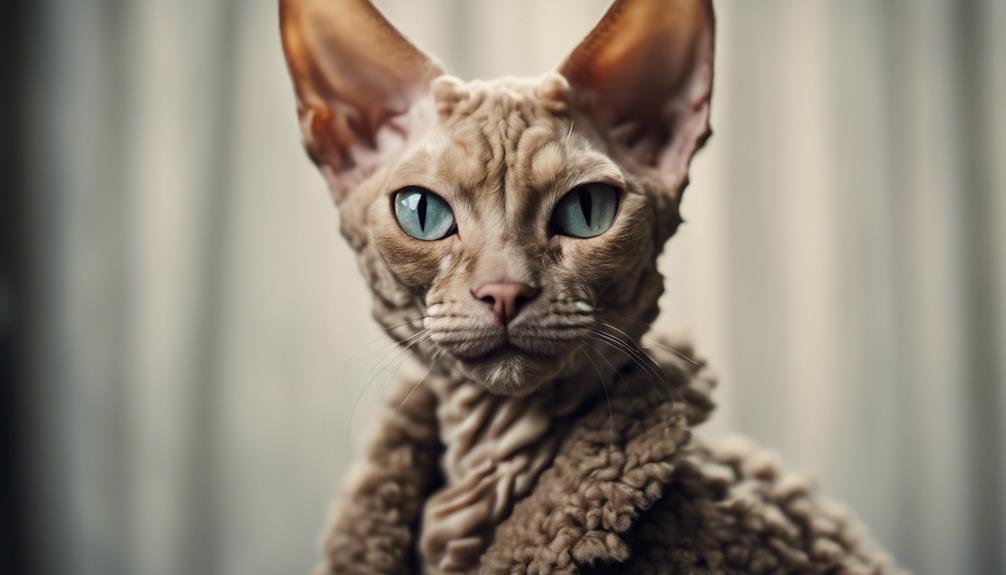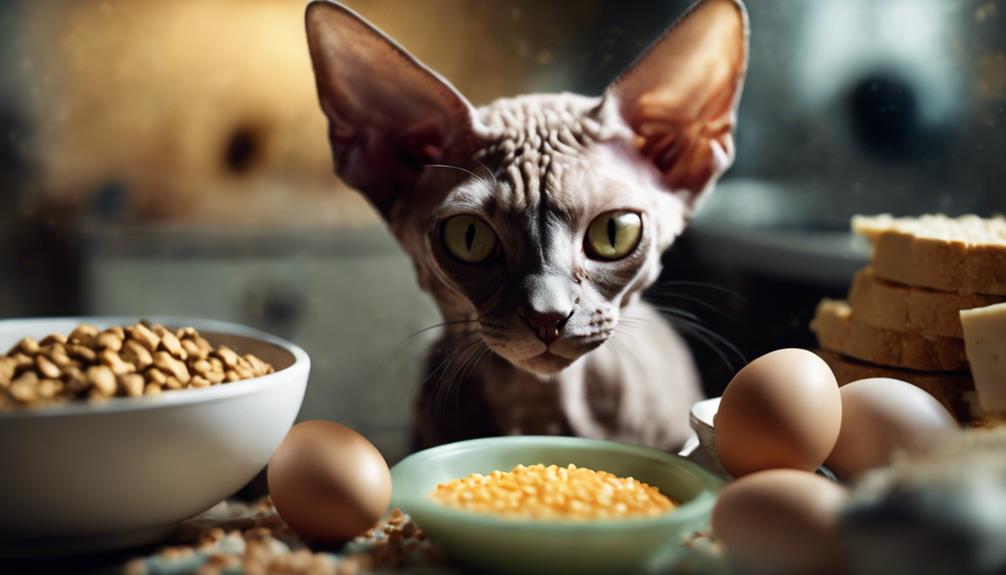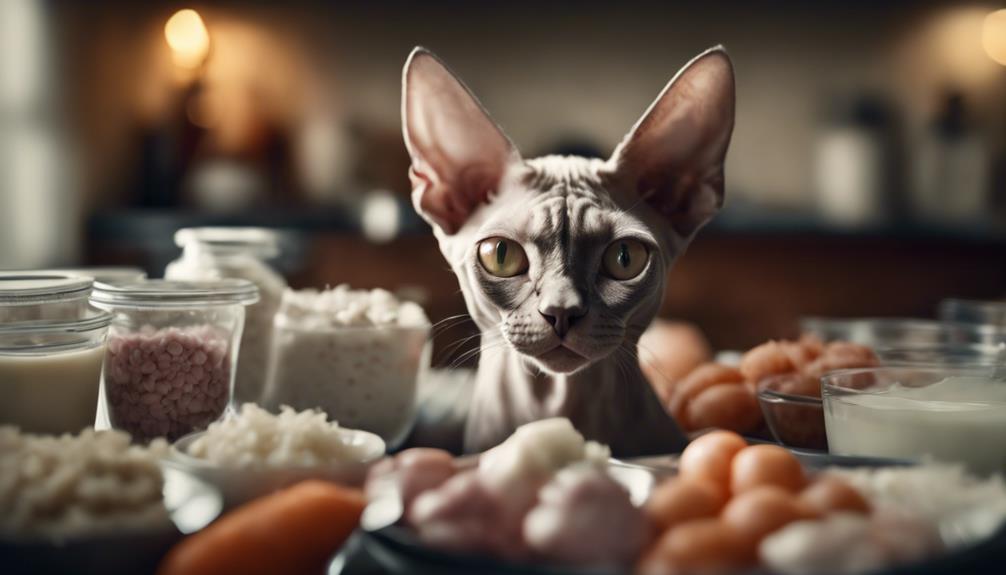As I observed the Devon Rex cat’s coat closely, I discovered an intriguing fact that sets it apart from other feline breeds.
The unique texture of their fur goes beyond mere softness, as it showcases a distinctive wavy pattern reminiscent of crushed velvet.
This unusual coat attribute is not only visually captivating but also serves a practical purpose that ties into the breed’s fascinating history, leaving me eager to explore further nuances of this remarkable feline characteristic.
Key Takeaways
- Devon Rex coat’s crushed velvet texture is distinctive due to a genetic mutation.
- Diverse coat colors and patterns, like tortoiseshell, enhance individuality.
- Special care and regular grooming are essential for maintaining the soft, wavy fur.
- Hypoallergenic qualities make the Devon Rex suitable for allergy-prone individuals.
Devon Rex Coat Texture
With a texture reminiscent of crushed velvet, the Devon Rex cat’s coat stands out as a unique feature among feline breeds. The wavy texture of their fur, coupled with the absence of outer guard hairs and a minimal undercoat, gives the coat a delicate and curly appearance.
This distinctive feel is a result of a genetic mutation that sets the Devon Rex apart from other cats with straight fur. Owners must engage in regular grooming to prevent matting and maintain the softness of the fur.
The fine and soft quality of the coat requires gentle care to avoid developing mats and to keep the coat’s matte prevention intact, preserving the unique and sought-after characteristics of the Devon Rex’s fur.
Devon Rex Coat Color Variations

The diverse array of coat colors displayed by Devon Rex cats enhances their visual appeal and individuality, showcasing a wide spectrum of hues and patterns.
- Devon Rex cats can exhibit a variety of coat colors such as black, blue, chocolate, cinnamon, lilac, white, tortoiseshell, calico, tabby, pointed, and shaded patterns.
- Their unique coat may feature colors in solid, bi-color, tri-color, and tabby patterns, creating visually distinctive appearances.
- Coat variations in Devon Rex cats can include striking patterns like tortoiseshell or calico with unique color distributions that add to their charm.
- Color combinations of white, cream, red, blue, and other hues contribute to the individuality of each Devon Rex cat, making them stand out among other breeds.
Devon Rex Coat Maintenance
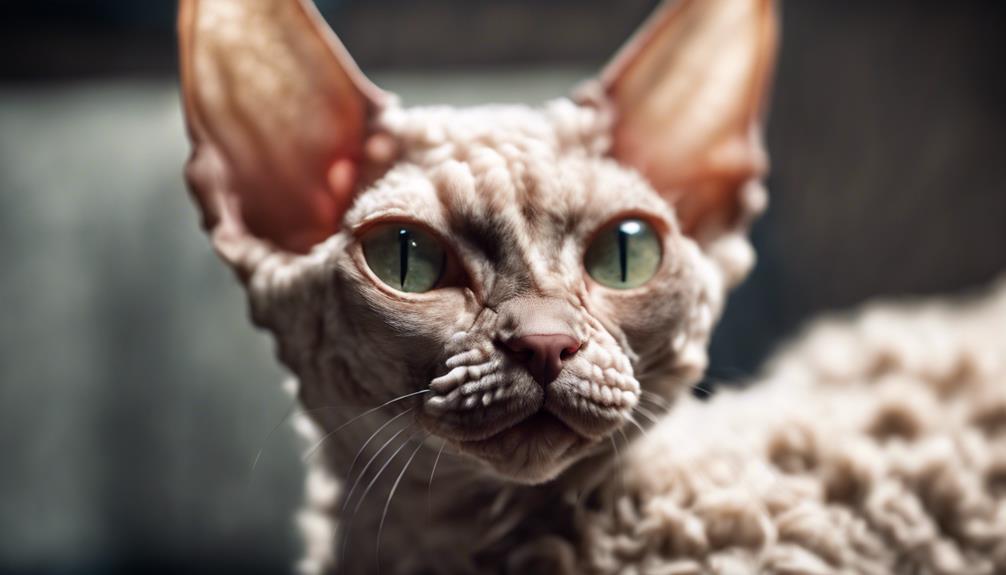
Regular grooming plays a crucial role in maintaining the unique coat of the Devon Rex cat due to its soft, wavy texture and specific characteristics. The Devon Rex’s coat, lacking outer guard hairs and with a minimal undercoat, requires special care to prevent matting. Gentle brushing is essential to keep the delicate skin under the curly coat healthy and tangle-free. Occasional moisturizing helps hydrate the skin and maintain its optimal condition. Here is a table summarizing the key points for effective Devon Rex coat maintenance:
| Aspect | Importance |
|---|---|
| Gentle Brushing | Prevents tangles and maintains coat health |
| Moisturizing | Hydrates the skin and keeps it healthy |
| Regular Grooming | Essential to prevent matting and preserve the coat’s unique texture |
Devon Rex Coat Hypoallergenic Qualities
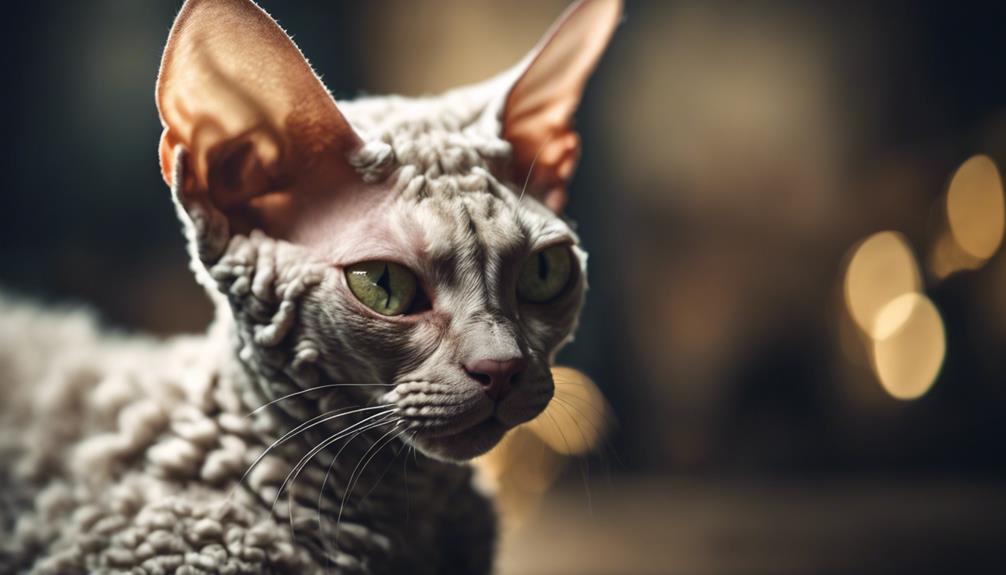
Maintaining the unique coat of the Devon Rex cat requires attention to its hypoallergenic qualities, attributed to the short, thin hairs that produce minimal dander. Devon Rex cats possess specific characteristics that make their coat suitable for individuals prone to allergies:
- Short, thin hairs reduce dander production.
- Lack of guard hairs results in decreased shedding and allergens.
- Curly texture aids in trapping loose fur.
- Minimal shedding and dander make Devon Rex cats less likely to trigger allergic reactions.
Understanding these features of the Devon Rex coat can help individuals with allergies enjoy the companionship of these unique felines without the usual concerns associated with allergic reactions.
Devon Rex Coat Genetic Factors
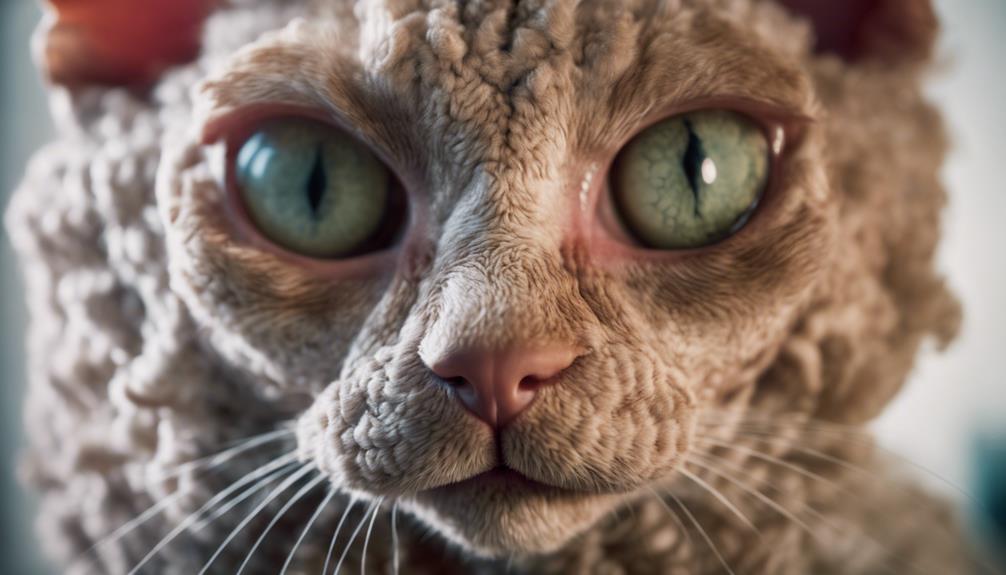
A genetic mutation affecting hair follicles gives rise to the unique coat characteristics of the Devon Rex cat. This mutation results in a coat that is short, soft, and curly, distinguishing it from other cat breeds. The Devon Rex lacks the typical outer guard hairs and has a sparse undercoat due to this genetic factor. The curly coat of the Devon Rex is a dominant trait, meaning it is passed down from one generation to the next. Genetic testing can confirm the presence of the gene responsible for the distinctive coat of the Devon Rex cat.
| Genetic Factor | Devon Rex Coat Characteristics |
|---|---|
| Mutation | Short |
| Soft | |
| Curly | |
| Dominance | Passed down generations |
| Genetic Testing | Confirms unique gene presence |

